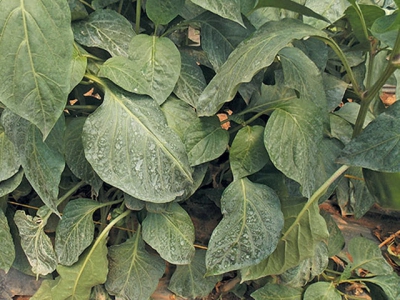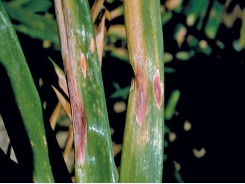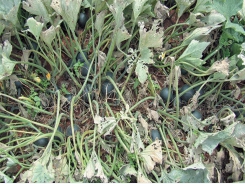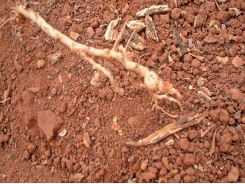How to ensure effective crop spraying

Non-systemic products have to be sprayed thoroughly to be effective. This applies particularly to fungicides.
With insecticides, you might get away with less than full coverage, depending on the mobility of the pest.
For example, with caterpillars that eat through the leaf, it is not essential to obtain full coverage on both sides, provided you apply the correct rate of active ingredient.
Fungal diseases are more of a challenge as they usually develop on the underside of leaves, so you need to spray these areas thoroughly.
In fact, wetting the underside usually gives fairly good coverage of the top of the leaves as well.
Admittedly, it takes considerable effort to reach the underside of leaves, especially in the case of Brassicaceae (the cabbage family) in the nursery.
Here, wetting the underside of the leaves close to the ground is awkward, yet this is where downy mildew starts off and has to be controlled.
All seedling growers experience downy mildew on their plants at some stage, and most resort to systemic products.
In doing so, they reduce the working life of the product. Systemic products should be used only as an emergency measure, not for routine spraying.
Seedling growers should rather employ contact products to stop the fungus from entering the leaf (prophylactic coverage).
This invariably uses air and fine droplets to reach the underside of the leaves. I find, however, that few farmers check under the leaves to ensure that full coverage has been achieved, as they assume that the misting does the job.
Physically inspecting the underside of the leaves is the only way to be sure.
If you get your spraying right, you can use cheaper fungicides very effectively. This will not only save you money, but ensure that you still have effective systemic products ready for emergencies – such as when climatic conditions are especially favourable for the development of diseases.
Use common sense!
Tomatoes are prone to leaf diseases; be especially vigilant here. With tall-growing varieties, the leaves hang down. Spraying from the side means that the force of the spray often pushes the outer leaves flat, preventing penetration to the areas where diseases usually start.
I recall visiting a tomato farmer who proudly showed me his new spray rig. It consisted of a vertical pipe with nozzles equally spaced all the way up. The outer leaves glistened with water. I pulled up a leaf and showed him that those underneath were dry.
He was stunned.
If he had angled the nozzles to face 45° upwards, the spray would have caused the leaves to open outwards, enabling it to penetrate as far as the back of leaves on the other side. Even the distance from nozzle to plant makes a difference – it takes trial and error to get the set-up correct.
Beans are also a problem. They are low to the ground and usually sprayed from above. Unless you have a wind-assisted sprayer to wave the leaves around, the undersides will remain dry.
To ensure effective spraying on crops such as these, ensure that the crop is uniformly planted and fit drop arms to the spray boom with nozzles angled up on either side. All this takes effort, but it’s worth it.
Coverage is everything!
Related news
Tools

Phối trộn thức ăn chăn nuôi

Pha dung dịch thủy canh

Định mức cho tôm ăn

Phối trộn phân bón NPK

Xác định tỷ lệ tôm sống

Chuyển đổi đơn vị phân bón

Xác định công suất sục khí

Chuyển đổi đơn vị tôm

Tính diện tích nhà kính

Tính thể tích ao




 How to calibrate a spray rig
How to calibrate a spray rig  Can marigolds control eelworm?
Can marigolds control eelworm?